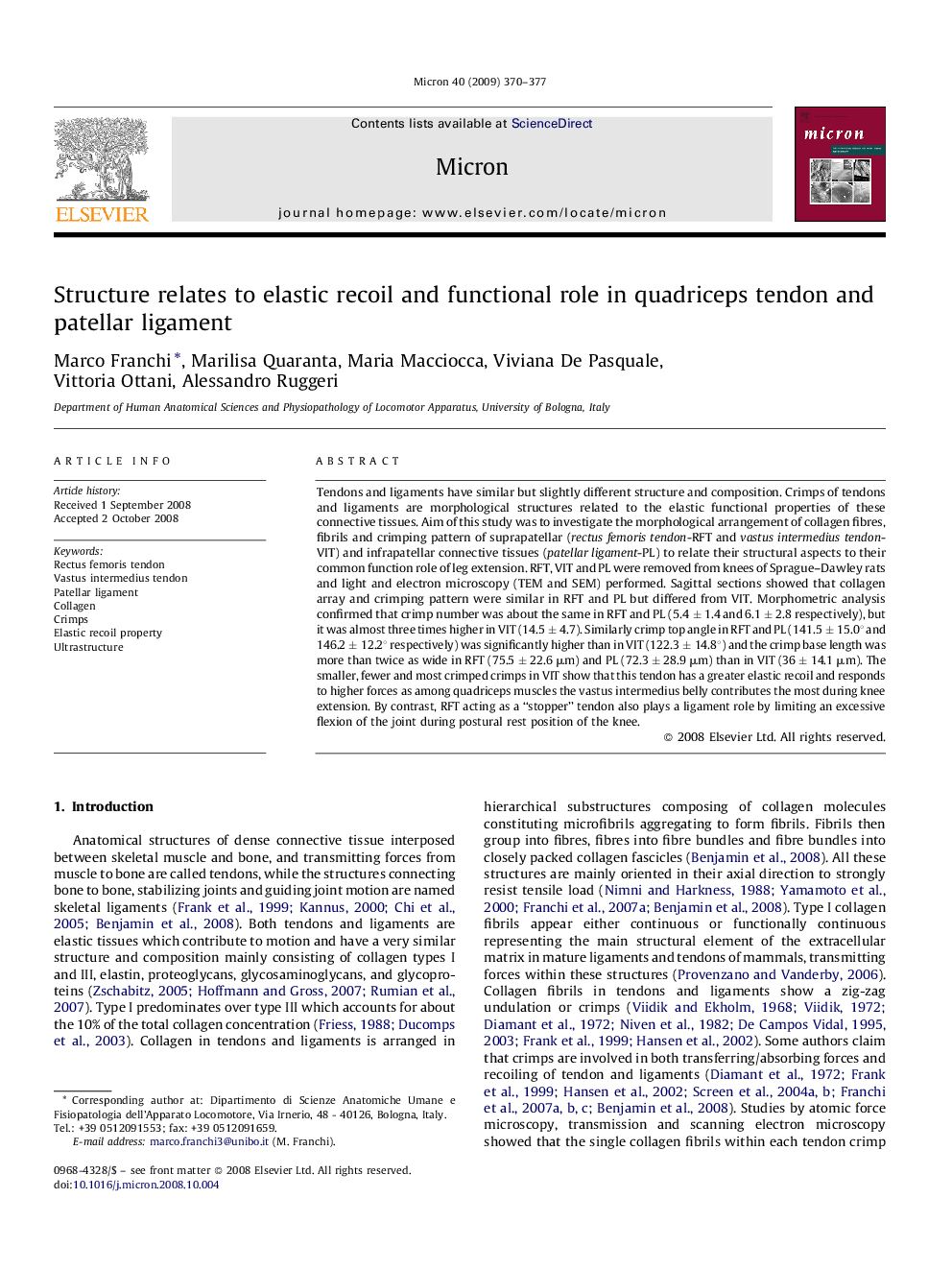| Article ID | Journal | Published Year | Pages | File Type |
|---|---|---|---|---|
| 1590073 | Micron | 2009 | 8 Pages |
Abstract
Tendons and ligaments have similar but slightly different structure and composition. Crimps of tendons and ligaments are morphological structures related to the elastic functional properties of these connective tissues. Aim of this study was to investigate the morphological arrangement of collagen fibres, fibrils and crimping pattern of suprapatellar (rectus femoris tendon-RFT and vastus intermedius tendon-VIT) and infrapatellar connective tissues (patellar ligament-PL) to relate their structural aspects to their common function role of leg extension. RFT, VIT and PL were removed from knees of Sprague-Dawley rats and light and electron microscopy (TEM and SEM) performed. Sagittal sections showed that collagen array and crimping pattern were similar in RFT and PL but differed from VIT. Morphometric analysis confirmed that crimp number was about the same in RFT and PL (5.4 ± 1.4 and 6.1 ± 2.8 respectively), but it was almost three times higher in VIT (14.5 ± 4.7). Similarly crimp top angle in RFT and PL (141.5 ± 15.0° and 146.2 ± 12.2° respectively) was significantly higher than in VIT (122.3 ± 14.8°) and the crimp base length was more than twice as wide in RFT (75.5 ± 22.6 μm) and PL (72.3 ± 28.9 μm) than in VIT (36 ± 14.1 μm). The smaller, fewer and most crimped crimps in VIT show that this tendon has a greater elastic recoil and responds to higher forces as among quadriceps muscles the vastus intermedius belly contributes the most during knee extension. By contrast, RFT acting as a “stopper” tendon also plays a ligament role by limiting an excessive flexion of the joint during postural rest position of the knee.
Related Topics
Physical Sciences and Engineering
Materials Science
Materials Science (General)
Authors
Marco Franchi, Marilisa Quaranta, Maria Macciocca, Viviana De Pasquale, Vittoria Ottani, Alessandro Ruggeri,
